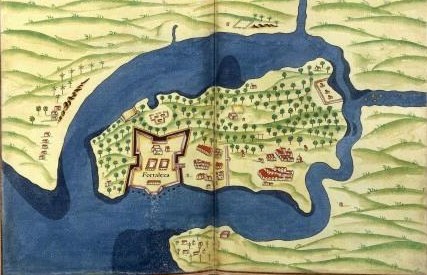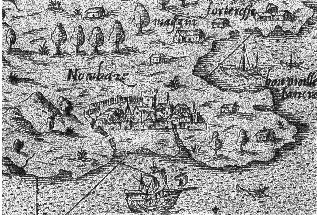
To next page
(Ibn Battuta visits Mombasa)
We came to Mambasa (Mombasa), a large island two days journey by sea from the Sawihil country. It possesses no territory on the mainland. They have fruit trees on the island, bananas, lemons, and oranges. The people also gather a fruit they call the jammun (eugenia jambu) which is similar to the olive and its stone is like an olive stone except that it is extremely sweet. The people are not farmers but import grain from the Swahili. The greater part of the diet is bananas and fish. They follow the Shafi' rite, and are pious, honorable, and upright.
And they have well built wooden mosques. Beside the door of each mosque are one or two wells, one or two cubits (one cubit is 18 inch) deep. They draw water from them with a wooden vessel which is fixed on to the end of a thin stick, a cubit long. The earth around the mosque and the well is stamped flat. Anyone who wishes to enter the mosque first washes his feet, beside the door is a piece of heavy material for drying them. Anyone wishing to perform the ablutions, takes the vessel between his thighs, pours water on his hands, and so makes his ablutions. Everyone here goes barefoot.
